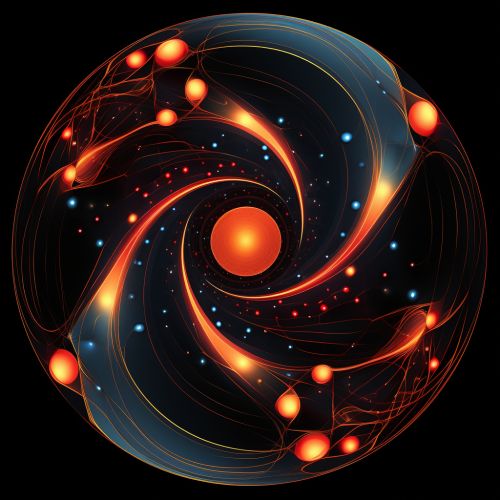Anyon
Introduction
Anyons are a type of quasiparticle that occur only in two-dimensional systems, with properties much less restrictive than fermions and bosons. In contrast to fermions and bosons, which obey the Fermi-Dirac and Bose-Einstein statistics, anyons obey fractional statistics, interpolating between fermions and bosons.


Properties
Anyons are characterized by their unusual behavior when two of them are interchanged, leading to a phase shift but not necessarily an integer multiple of π. This is in stark contrast to fermions and bosons, which acquire a phase shift of -1 and 1, respectively, under such interchange. This property of anyons is due to their existence in two dimensions, where particle paths can wind around each other.
Types of Anyons
There are two types of anyons: Abelian and non-Abelian. Abelian anyons have a wave function that picks up a phase factor when two anyons are interchanged, while non-Abelian anyons have a wave function that transforms under a representation of the braid group when two anyons are interchanged. Non-Abelian anyons are of particular interest in the field of quantum computing, as they can be used to form a topological quantum computer.
Anyons and Quantum Computing
Non-Abelian anyons are of particular interest in the field of quantum computing. The braiding of non-Abelian anyons is non-commutative, which means that the final state of a system of non-Abelian anyons depends on the sequence of interchanges. This property can be used to form a topological quantum computer, with quantum information stored in the state of a system of non-Abelian anyons. The advantage of such a topological quantum computer is that it is inherently resistant to many types of errors, including decoherence.
Experimental Detection
The experimental detection of anyons is a challenging task, due to their exotic properties. However, several experiments have provided evidence for the existence of anyons. These include the fractional quantum Hall effect, where the observed fractional charge and statistics can be explained by the existence of anyons. More recently, experiments with ultra-cold atomic gases have provided further evidence for the existence of anyons.
Conclusion
Anyons are a unique type of quasiparticle that exist only in two dimensions. Their unusual properties, including their fractional statistics, make them of great interest in various fields of physics, including condensed matter physics and quantum computing. While their experimental detection is challenging, several experiments have provided evidence for their existence, making them a fascinating subject of ongoing research.
